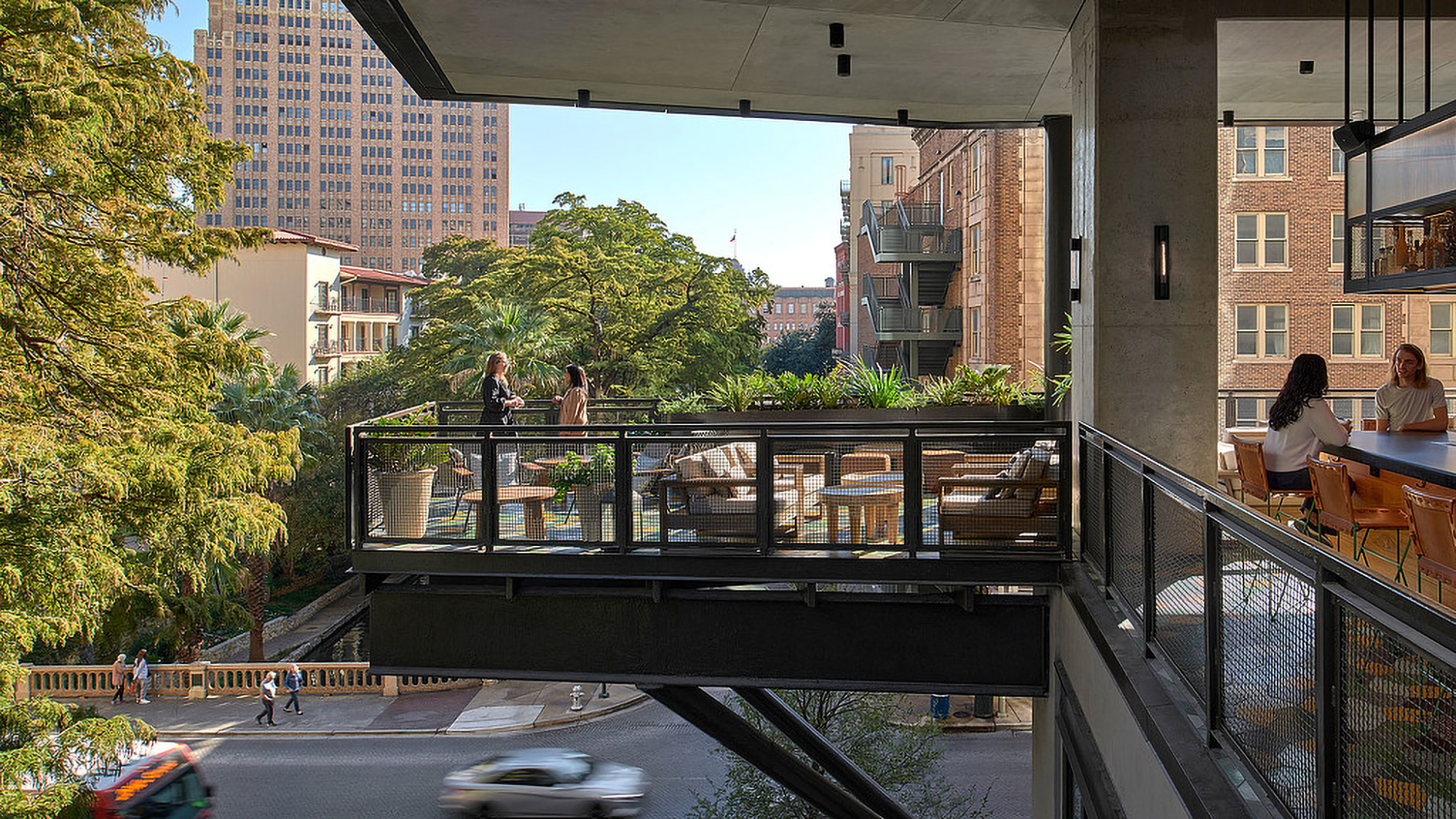
Cities are an essential part of how we live, work, and play. They can be designed with principles rooted in sustainability, health and well-being, and social equity—or not. Cities aren’t created equally and access to opportunity and resources varies greatly.
We’ve seen ample research showing that dense, urban communities reduce greenhouse gas emissions by supporting human powered transit—making life walkable and bikeable. This type of development, known as the “20-minute city,” fosters connectivity to everyday resources by design.
However, the 20-minute city isn’t without flaws. An equal amount of research shows that while these communities often reduce a city’s carbon footprint, they can spread social inequalities and create niches that lack diversity.
At Gensler, our priority is creating equitable, low-carbon communities. By designing through an environmental, social and governance (ESG) lens, we can create healthy, walkable communities for everyone.
Environmental, Health, and Social Benefits
It’s critical that the future of design strategy aligns with the United Nations’ sustainable development goals. With this in mind, many urban and transportation policies warrant a new model that includes designing for mobility.
Motorized transit impacts our health in many ways, from causing air pollution and isolation, to reducing physical activity. Implementing a 20-minute city (and more human-powered modes of transit) as a preferred master plan can improve our health and air quality.
Additionally, we must consider climate change. Vehicles are a major contributor of greenhouse gas emissions—in fact, vehicular transportation accounts for about 30% of annual U.S. emissions. Because the 20-minute city reduces vehicle traffic and gas emissions, it could offer an excellent development model to implement at scale.
To be impactful, walkable city designs must factor in population density, arterial street connectivity, and access to amenities like shopping plazas. These components are critical for keeping cities active, allowing for inclusion, and supporting sustainable economic development.
Equity Within the 20-Minute City
Dense urban communities are not without flaws. They are their own economy—which can pose a challenge—specifically when a limited number of high-paying jobs or access to mass transit restrict access to job diversification. Without transit-oriented-development (TOD), the 20-minute city can translate into fewer opportunities for financial stability for residents. With TOD, we can design for positive societal change and reduced greenhouse gas emissions.
There’s also the issue of green space. Knitting a community together with access to parks and similar spaces is essential for communal engagement, biodiversity, and play. A smaller community can mean a smaller footprint for green space, which can hinder equitable access to this resource—an unintended consequence of dense, urban neighborhoods.
There are other unintended consequences we need to consider as well. For instance, not everyone has the ability to choose to reside in a healthy, walkable community. Low-income residents without the financial means to a vehicle would likely experience limited total mobility. And low-income residents with multiple children experience further disadvantages.
Moreover, densely organized cities don’t guarantee reduced vehicular transit or associated emissions. Designing and developing a culture that walks, bikes, and rides is essential. Understanding the distinction between accessibility and mobility is a critical piece in the design narrative. It includes transcending from navigating between zones, to fostering active neighborhoods.
Data-Driven Design and Policy Creation
A movement to use data to inform urban planning policy is gaining traction, with public policy leaders beginning to understand the benefits of establishing key metrics to gauge their success. Using data to inform community planning and establish equitable places is paramount to the success of the city of the future.
A recent peer-reviewed study found that the majority of respondents (47%) were willing to sacrifice personal preferences in exchange for access to walkable, transit-oriented communities. Data quantifies the demand for TOD is real. Where public policy is properly informed, developers can meet these needs and resolve issues associated with lack of diversity and unequitable access—for instance, to green space or employment centers—providing positive socio-economic benefits.
Planning Ahead for Success
Designing sustainable, equitable communities at scale is a challenge that can’t be addressed with a one-size-fits-all solution. The good news? The industry is ripe for innovation.
To create a new framework for the sustainable city of the future, we need to analyze and determine our key metrics of success. Our ESG Measurable Impact work is underway. We’re defining KPIs in every practice area that is actively establishing a comprehensive list of key data points. With this data, urban planners, policymakers, and the like, could be armed with a powerful kit to create prosperous, healthy, low-emitting, and potentially closed-loop cities, for a sustainable and vibrant tomorrow.
For media inquiries, email [email protected].
The post "The future of the 20-minute city" appeared first on Building Design & Construction






0 Comments